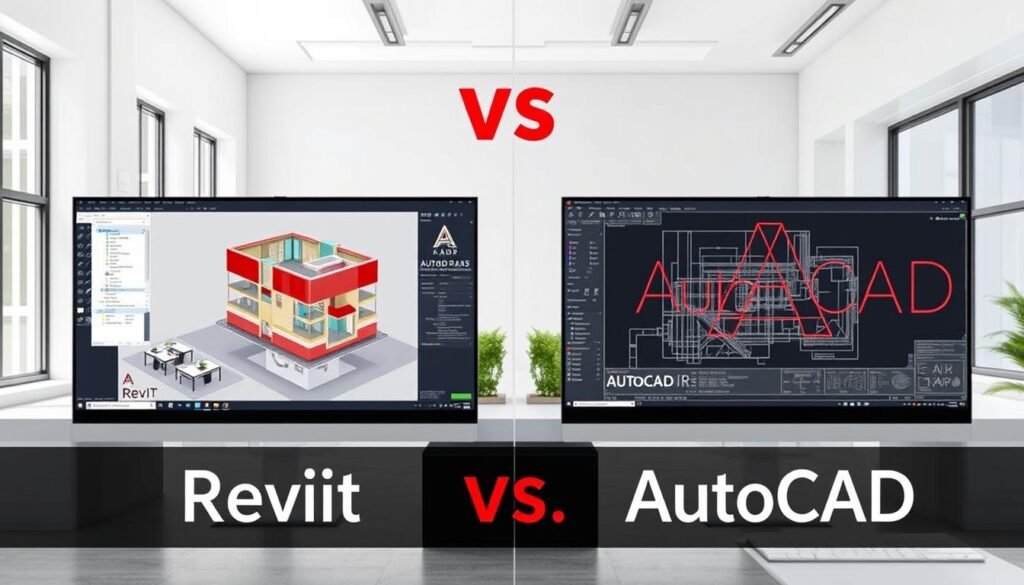Revit Mentoring VS One-Time Training: Which Works Better?

Revit Mentoring vs. One-Time Training: Which Works Better?
Architects and designers are constantly looking for ways to improve their workflow and productivity. Effective Revit training is crucial for achieving this goal.
The architectural industry has seen a rise in flashy, one-off Revit workshops, but the question remains: is a one-time course enough to change a team’s workflow? Ongoing mentoring could be the key to unlocking the full potential of Revit.
Choosing the right learning approach for Revit can significantly impact the success of architectural projects.
Key Takeaways
- Revit training can significantly improve workflow and productivity.
- Ongoing mentoring may offer more benefits than one-time training.
- The right learning approach can impact the success of architectural projects.
- Mentoring can help unlock the full potential of Revit.
- One-time training may not be enough to change a team’s workflow
Understanding the Revit Landscape
As architecture and design continue to embrace digitalization, the importance of Revit proficiency cannot be overstated. The software has revolutionized the way architects and designers work, bringing about a paradigm shift in the industry

As architecture and design continue to embrace digitalization, the importance of Revit proficiency cannot be overstated. The software has revolutionized the way architects and designers work, bringing about a paradigm shift in the industry.
The Evolution of Revit in Modern Architecture
Revit has evolved significantly over the years, becoming an indispensable tool in modern architecture. Its capabilities in Building Information Modeling (BIM) have transformed the design process, enabling architects to create complex designs with greater precision.
Key Features of Revit:
- Advanced BIM capabilities
- Enhanced collaboration tools
- Improved design accuracy
Why Proper Revit Education Matters
Proper Revit education is crucial for maximizing the benefits of the software. It not only enhances the user’s ability to work efficiently but also contributes to the overall success of the project.
Connection to Firm Profitability
Proficiency directly impacts project efficiency. With the right training, users can navigate the software more effectively, reducing the time spent on project execution. As “The efficiency gained through Revit training can significantly reduce project timelines.”
Defining Revit Training VS Mentoring: Key Differences

When it comes to mastering Revit, two primary educational approaches emerge: traditional training and mentoring. Both methods aim to enhance Revit skills, but they differ significantly in their execution and outcomes.
What Constitutes Traditional Revit Training
Traditional Revit training typically involves structured programs with a set curriculum, taught by instructors who guide students through a series of exercises and projects. This structured learning environment is designed to cover the software’s fundamental features and tools.
Key aspects of traditional training include:
- Classroom or online instruction
- Predefined syllabus
- Hands-on exercises
The Mentoring Approach to Revit Mastery
In contrast, the mentoring approach to Revit mastery involves personalized guidance from an experienced professional. Mentoring is tailored to the individual’s or team’s specific needs, providing real-time feedback and support.
Core Philosophical Differences
The core philosophical differences between Revit training and mentoring lie in their approaches to knowledge transfer and timeline expectations.
Knowledge Transfer Methods
Revit training relies on a one-to-many knowledge transfer method, where one instructor teaches multiple students. In contrast, mentoring uses a one-to-one approach, providing personalized attention and guidance.
Timeline Expectations
Traditional training programs usually have a fixed duration, with clear start and end dates. Mentoring, however, can be an ongoing process, with the flexibility to adjust the pace according to the mentee’s progress.
Revit training programs are designed to provide a comprehensive learning experience in a single session, catering to the needs of architectural firms looking to quickly upskill their teams.
Typical Format of Revit Training Programs
These programs are usually structured to cover the essential features and functionalities of Revit, ensuring that participants gain a solid foundation in the software. The training often includes hands-on exercises and real-world examples to reinforce learning.
Advantages of Structured Learning Environments
A structured learning environment offers several benefits, including:
- Efficient use of time, as the training is focused and intensive
- Comprehensive coverage of Revit features, reducing knowledge gaps
- Opportunities for immediate feedback and questions
As noted by industry experts, “Structured training programs provide a solid foundation for Revit users, enabling them to apply their skills effectively in real-world projects.”
Cost and Time Considerations
One-time training programs are often more cost-effective than ongoing mentoring, as they eliminate the need for continuous support. However, it’s crucial to consider the long-term benefits and potential return on investment.
Common Training Packages and Pricing
Training packages vary widely, with costs depending on the depth of coverage, duration, and delivery method. Here’s a comparison of typical training packages:
Comparative Revit Training Costs (USD vs INR)
| Training Type | Typical Cost (USD) | Cost in INR (approx.) | Notes |
|---|---|---|---|
| Self-Paced (Udemy, Coursera, etc.) | $60 – $100 | ₹5,000 – ₹8,500 | Budget-friendly, flexible, no live support |
| Intro, Hands-On (VDCI, etc.) | $500 – $600 | ₹42,000 – ₹50,000 | Structured, includes projects & some live help |
| Live Instructor-Led (ONLC, etc.) | $2,000 – $2,500 | ₹1.68 – ₹2.1 lakh | 4–5 days, real-time trainer support, certification-oriented |
| Certification Programs (3–6 months) | $1,700 – $3,000 | ₹1.43 – ₹2.52 lakh | Professional courses, 60–140 hrs, Autodesk certification prep |
By understanding the structure and benefits of one-time Revit training programs, architectural firms can make informed decisions about their training needs and budget.
The Mentoring Approach: Ongoing Support and Growth
Unlike one-time training, Revit mentoring fosters continuous learning and improvement. This approach provides professionals with the ongoing support they need to grow in their careers.
How Revit Mentoring Typically Works
Revit mentoring typically involves personalized guidance from an experienced professional. This one-on-one interaction allows mentees to receive tailored feedback on their projects, helping them overcome specific challenges.
Key components of Revit mentoring include:
- Regular check-ins with the mentor
- Project-based learning
- Feedback on design and implementation
Benefits of Personalized Guidance
Personalized guidance is a cornerstone of effective Revit mentoring. By receiving feedback tailored to their needs, individuals can accelerate their learning process and improve their skills more efficiently.
“Mentoring is a brain to pick, an ear to listen, and a push in the right direction.” – John Crosby
Long-term Skill Development Potential
The mentoring approach offers significant potential for long-term skill development. As mentees continue to work on real projects with the guidance of their mentors, they build a strong foundation in Revit and develop advanced skills.
Mentoring Relationship Dynamics
The dynamics of the mentoring relationship play a crucial role in its effectiveness. A successful mentoring relationship is built on trust, open communication, and mutual respect.
Mentoring Relationship Dynamics
The dynamics of the mentoring relationship play a crucial role in its effectiveness. A successful mentoring relationship is built on trust, open communication, and mutual respect.
| Aspect | Description | Benefit |
| Trust | Foundation of the mentoring relationship | Open sharing of challenges and ideas |
| Communication | Regular and clear exchange of information | Effective feedback and guidance |
| Mutual Respect | Valuing each other’s expertise and time | Productive and positive relationship |
The mentoring approach offers significant potential for long-term skill development. As mentees continue to work on real projects with the guidance of their mentors, they build a strong foundation in Revit and develop advanced skills.
Mentoring Relationship Dynamics
The dynamics of the mentoring relationship play a crucial role in its effectiveness. A successful mentoring relationship is built on trust, open communication, and mutual respect.
| Aspect | Description | Benefit |
| Trust | Foundation of the mentoring relationship | Open sharing of challenges and ideas |
| Communication | Regular and clear exchange of information | Effective feedback and guidance |
| Mutual Respect | Valuing each other’s expertise and time | Productive and positive relationship |
Knowledge Retention: Training vs. Mentoring
Knowledge retention plays a vital role in determining the success of Revit education methods. The ability to retain information learned during training or mentoring sessions directly impacts the long-term proficiency of users.
The Forgetting Curve in Technical Learning
The forgetting curve is a psychological phenomenon where the brain’s ability to retain memory decreases over time if the information is not reinforced. In the context of Revit training, this means that without regular practice or review, users may forget crucial skills and techniques learned during one-time training sessions. Research has shown that the forgetting curve can significantly impact the effectiveness of technical training programs.
How Mentoring Addresses Knowledge Retention
Mentoring approaches address the issue of knowledge retention by providing ongoing support and guidance. Mentors work closely with learners, reinforcing previously learned concepts and introducing new skills in a gradual manner. This continuous interaction helps to mitigate the effects of the forgetting curve, ensuring that knowledge is retained over a longer period.
Reinforcement Strategies in Both Approaches
Both training and mentoring can employ reinforcement strategies to improve knowledge retention. Repetition is a key strategy, where learners are given the opportunity to practice and reinforce their skills through hands-on projects. Additionally, regular assessments and feedback can help identify areas where learners need further support, allowing for targeted reinforcement.
Developing Advanced Revit Team Skills
The development of advanced Revit skills at a team level involves a combination of structured training and personalized mentoring. This dual approach ensures that team members not only learn Revit software but also understand how to apply it effectively in collaborative projects.
Collaborative Learning in Training Settings
Collaborative learning in training settings fosters an environment where team members can share knowledge and experiences. This approach enhances revit team skills by encouraging peer-to-peer learning and problem-solving.
How Mentoring Builds Team Capabilities
Mentoring plays a crucial role in building team capabilities by providing personalized guidance and support. Mentors can address specific challenges faced by team members, thereby improving overall team performance.
Measuring Team Skill Improvement
To measure team skill improvement, it’s essential to establish clear benchmarks and assessment criteria. Regular evaluations and feedback sessions can help identify areas for further development.
Team Standardization Benefits
Team standardization offers several benefits, including improved consistency in project execution and enhanced collaboration among team members. By standardizing Revit practices, teams can reduce errors and improve overall efficiency.
| Benefits | Collaborative Learning | Mentoring |
| Improved Team Skills | Yes | Yes |
| Personalized Guidance | No | Yes |
| Enhanced Collaboration | Yes | Yes |
Cost-Benefit Analysis: Investment vs. Return
To maximize the value of Revit education, firms must conduct a thorough cost-benefit analysis, weighing investment against return. This involves considering both the direct and indirect costs associated with Revit training or mentoring, as well as the tangible and intangible benefits that accrue over time.
Short-term vs. Long-term Financial Considerations
When evaluating the cost of Revit education, it’s essential to distinguish between short-term and long-term financial considerations. Initial costs for training or mentoring programs can be significant, but they may lead to long-term savings through increased productivity and reduced errors.
Measuring ROI on Revit Education
Measuring the return on investment (ROI) for Revit education involves assessing the impact on project outcomes, team productivity, and overall business performance. Firms can use metrics such as project completion times, error rates, and client satisfaction to evaluate the effectiveness of their Revit education initiatives.
Hidden Costs and Benefits
Beyond the direct costs of training or mentoring, there are often hidden costs and benefits to consider. For example, the time spent by team members in training can take away from billable hours, while the knowledge gained can lead to increased efficiency and better project outcomes.
Productivity Gains Over Time
One of the significant benefits of Revit education is the potential for productivity gains over time. As team members become more proficient in Revit, they can complete tasks more quickly and accurately, leading to improved project outcomes and increased client satisfaction.
By carefully evaluating the costs and benefits of Revit education, firms can make informed decisions about their investment in training or mentoring. This analysis can help ensure that they achieve a strong ROI and maximize the value of their Revit education initiatives.
Revit Support Services: The Ongoing Need
As architectural firms continue to adopt Revit, the need for ongoing support services becomes increasingly important. Effective support is crucial for maximizing the benefits of Revit and maintaining productivity in design workflows.
Post-Training Support Options
After initial training, architectural teams often require additional support to address specific challenges and optimize their use of Revit. Various post-training support options are available, including online resources, user communities, and professional consulting services.
How Mentoring Integrates Ongoing Support
Mentoring programs provide personalized guidance and support, helping teams to overcome specific challenges and improve their Revit skills over time. This approach integrates ongoing support into the learning process, ensuring that teams can continue to grow and adapt.
Creating Internal Knowledge Bases
Developing internal knowledge bases is essential for long-term success with Revit. This involves documenting best practices, creating custom templates, and establishing standards for data management.
Troubleshooting Common Challenges
Effective support services also involve troubleshooting common challenges, such as model management issues, family creation, and data exchange problems. By addressing these challenges proactively, teams can minimize downtime and maintain productivity.
Architectural Training Beyond Software Skills
The architectural industry’s shift towards Revit and BIM necessitates a training approach that encompasses both technical skills and industry best practices. As firms adopt these technologies, the focus must extend beyond mere software proficiency to include a deeper understanding of architectural workflows and industry standards.
Integrating Revit with Broader Architectural Knowledge
Effective Revit training should integrate software skills with broader architectural knowledge, including design principles, building codes, and project management best practices. This holistic approach ensures that users can apply Revit within the context of overall project goals.
BIM Workflow Optimization
Optimizing BIM workflows is crucial for maximizing the benefits of Revit. Training should cover strategies for streamlining data management, improving collaboration among project stakeholders, and leveraging Revit to enhance overall project efficiency.
Industry Standards and Best Practices
Adhering to industry standards and best practices is essential for successful Revit implementation. Training programs should educate users on relevant standards, such as those related to data exchange, model coordination, and information management.
| Training Aspect | Description | Benefits |
| Revit Software Skills | Mastering Revit’s features and tools | Increased efficiency, improved accuracy |
| BIM Workflow Optimization | Streamlining data management and collaboration | Enhanced project coordination, reduced errors |
| Industry Standards and Best Practices | Understanding and applying relevant standards | Improved interoperability, compliance with industry norms |
By incorporating these elements, architectural training can move beyond mere software skills, equipping professionals with the knowledge and expertise needed to excel in a BIM-centric industry.
Hybrid Approaches: Combining Training and Mentoring
In the quest for optimal Revit proficiency, many organizations are now exploring hybrid approaches that combine the strengths of structured training and personalized mentoring. This blended learning strategy aims to leverage the benefits of both methods to create a more effective and sustainable learning experience.
Structured Training with Follow-up Mentoring
One effective hybrid model involves providing initial structured training, followed by ongoing mentoring support. This approach allows team members to gain a solid foundation in Revit through formal training, while subsequent mentoring helps them apply their knowledge in real-world scenarios. Mentoring reinforces learning and addresses specific challenges that arise during project implementation.
Customizing Learning Paths for Different Team Members
Hybrid models also enable firms to tailor learning paths to individual team members’ needs. By assessing the skills and learning styles of each team member, organizations can combine structured training with personalized mentoring to create a customized learning experience. This flexible approach ensures that all team members can achieve their full potential in using Revit.
Case Studies of Successful Hybrid Models
Several architectural firms have successfully implemented hybrid Revit learning models, achieving significant improvements in team proficiency and project delivery. These case studies demonstrate the potential of hybrid approaches to enhance Revit skills and drive business success. By examining these examples, other firms can gain insights into designing effective hybrid learning strategies tailored to their specific needs.
Conclusion: Choosing the Right Revit Learning Approach
Selecting the ideal Revit learning approach is crucial for architectural firms seeking to enhance their design capabilities. The debate between Revit training and mentoring highlights the importance of understanding the unique benefits of each method. Revit training provides a structured learning environment, while mentoring offers personalized guidance and long-term skill development.
When deciding on a Revit learning approach, consider the specific needs of your team and the goals of your architectural projects. Revit training vs mentoring is not a one-size-fits-all decision; it’s about choosing the method that best aligns with your firm’s objectives and workflow. Architectural training plays a vital role in this decision, as it directly impacts the quality of your designs and project outcomes.
Ultimately, the right Revit learning approach will depend on your team’s current skill level, the complexity of your projects, and your firm’s long-term goals. By understanding the differences between Revit training and mentoring, you can make an informed decision that enhances your team’s capabilities and drives success in your architectural projects.

